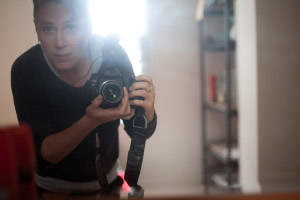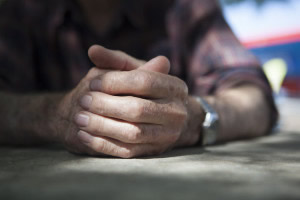Community Projects
Nuclear Futures is recording and curating stories in collaboration with communities affected by Cold War atomic tests, and linking with development programs in those communities, to ensure arts projects serve local priorities.
Balaklava Creative Residencies and Performance Project
Maralinga Community Projects
International Workshops
The Archive
Balaklava
Working with a number of South Australian partners, including young people from the Wakefield Region, multi-media community-based arts activities will be delivered in Balaklava (South Australia) over 2014. The creative residency series involves a cohort of nationally acclaimed artists partnering with interested locals for skills development, exchange and collaboration. Creative projects include:
- the script development of a new play by award-winning playwright John Romeril, exploring the stories of nuclear veterans involved Australia’s atomic bomb tests during the 1950s and 60s.
- a multimedia installation project, led by SA Director Teresa Crea, to be included in the 2015 Adelaide Fringe Festival Program (February 13-14th @ Balaklava Town Hall).
- community photography workshops and exhibition, Field of View, with visiting artist Jessie Boylan and local photographer Lisa Redpath.
- creative and oral history research working with local nuclear veteran Avon Hudson, culminating in a photomedia exhibition Portrait of a Whistleblower, in February 2015 at the Balaklava Courthouse Gallery.
- other creative arts pop-ups and school visit activities.
In developing the original dramatisation and creative works, documentary, verbatim and multi-media art techniques will be used. The Balaklava activities relate to wider cultural development in the Wakefield Region, and are endorsed by Wakefield Regional Council and partnered by the State Library of South Australia and Wakefield Youth Advisory Committee. The community arts and cultural development work has been funded by Arts SA and the Australia Council for the Arts.
Click here to find out more.
Creative Team: Teresa Crea (Director); John Romeril (Playwright); Jessie Boylan (Photomedia Artist), Luke Harrald (Sound/ Composer), Nic Mollison (Projection Artist), Linda Dement (Digital Artist), Paul Brown (Creative Producer), Ellise Barkley (Program Manager) and Carly Friedrichs (Event coordination & administration).
Maralinga Community Projects
Men’s Storytelling and Sculpture Project
Artists in residence who are skilled in sculpture, landscape architecture and community facilitation will work with men from Yalata and Oak Valley, led by SA artist John Turpie, to devise and construct sculptures for installation at Yalata, and at other locations –including overseas. The project will convey the stories of family migration and community development since the 1950s, when British nuclear testing became a key factor in changing Aboriginal settlements in South Australia. The storytelling workshops will involve developing a ‘register of voices’, before entering a stage of collaborative design of space and artefacts, followed by construction of what are likely to be large scale installations. The project will commence in Spring 2014 and continue into 2015.
Twelve Bags
‘Twelve Bags’ is our working title for a new play, that will be the dramatised story of the 1980s campaign for recognition and the outcomes of the Royal Commission into British Nuclear testing, which provided Maralinga Tjarutja with resources in compensation for dispossession from their lands. The project will involve community writing workshops, then the writing of an original play. It will develop alongside the sculpture project’s storytelling workshop.
Connections
In this Digital Arts residency, a multi media artist and a photographer will facilitate a womens project connecting generations, and connecting people to country. The residency will build on an existing Natural Resource Management project and develop both secret and public images and stories. It will support school-community links and the development of IT skills. Following on from this project, young Yalata and Oak Valley participants may also become involved in the Nuclear Futures 2015 International workshop being planned in Japan.
Artist Mentoring Project
This project centres around a 10-12 week residency with Yalata artist Warren Paul (nicknamed E-bay), mentored by Pam Diment, Director of Ceduna Aboriginal Arts and Cultural Centre. E-bay, a line drawing specialist who is branching into pottery, will focus on making A-bomb-like objects as intermediate art works to inspire his line drawings.
Illustrated Book
Building on the successful 2009 publication of Maralinga the Anangu Storyby Yalata and Oak Valley Communities with Christobel Mattingley (Allen & Unwin Australia 2009) Nuclear Futures will support a new illustrated book in a collaboration between author Christobel Mattingley and the Edwards family at Yalata. The book will focus on the life of the late senior Anangu woman Yvonne Edwards, artist and major contributor to Maralinga the Anangu Story. The new work will be distributed via international networks in Australia, Japan, Britain and India.
Purchase Maralinga the Anangu Story by Yalata and Oak Valley Communities with Christobel Mattingley, Allen & Unwin Australia, 2009
Download Teacher notes
Key Partners: Yalata and Oak Valley communities, Allen and Unwin Publishing, Maralinga Tjarutja Council, Ceduna Aboriginal Arts and Cultural Centre
Key Artists: Linda Dement, Jessie Boylan, Pam Diment, Warren (E-Bay) Paul, Christobel Mattingley, Paul Brown, Tina Jackson
International Workshops
International Youth Leadership Workshops (2014-16)
The Nuclear Futures Partnership Initiative will work with the Global Hibakusha Project to facilitate three international youth leadership workshops, held annually, for representatives from Japan, Marshall Islands, Australia, and Kazakhstan. The creative focus is using digital media to enhance youth leadership skills. The overall aim of the workshops will be to build resilience and use creative expression to enhance empowerment and reconciliation. The artworks created will be multi-media and multi-platform – photography, short videos, music, painting, sculpture, and digital art that can be exhibited locally, uploaded online and toured internationally.
Key Partners: Global Hibakusha Project, Murdoch University, Atomic Photographers Guild, Japan Society for the Promotion of Science.
Key Artists: Bo Jacobs and Mick Broderick (Facilitators), Linda Dement (digital artist), Jessie Boylan (Photographer); Amitesh Grover (Live streaming).
Global Hibakusha Project
Positioned from within the Hiroshima Peace Institute (see below) at Hiroshima City University, the Global Hibakusha Project is an international outreach initiative engaging with radiation-exposed communities located near nuclear sites, such as atmospheric weapons testing, manufacturing or power plant accidents. ‘Hibakusha’ refers to the surviving victims and communities of the Hiroshima and Nagasaki bombings and is now used more broadly to describe atomic survivor communities worldwide. The key aims of the Global Hibakusha Project are to support the establishment of intercommunity connections, while enhancing community integrity and building hibakusha community resilience.
The Hiroshima Peace Institute was established in 1998, as a research institute affiliated with Hiroshima City University. Located in Hiroshima, the city that experienced the first atomic bombing in human history, the HPI engages in a variety of research activities relating to peace, nuclear holocausts, disarmament, and the related international politics.
This project has been assisted by the Australian Government through the Australia Council, its arts funding and advisory body.

The Archive
Fundamental to our creative works and to long term communication is the need to help organize and preserve extensive documentation held by those who have witnessed atomic tests and those who have campaigned for recognition and reconciliation. These are resources distinct from official records of atomic tests. The material held in communities provides unique personal perspectives in the form of annotated reports, medical case notes, personal maps, photographs, artifacts and documents, many of them one-off originals.
Using community and cultural development approaches, and with mentoring from staff of the State Library of South Australia (SLSA) we will curate material initially as a way to inform and support the script development process involved in the Balaklava performance project. The library will advise on the preservation and communication of evidence across the deep-nuclear future.
Key Partners: Nuclear Veterans and families, State Library of South Australia (SLSA), ANVA, Murdoch University, Atomic Photographers Guild
Key Artists/Personnel: SLSA Mentors, Avon Hudson (Adviser),
Community archivists TBA, and Ellise Barkley (Program Manager).


